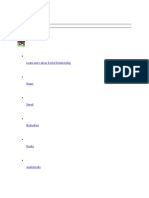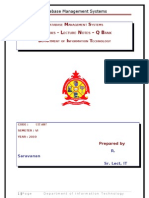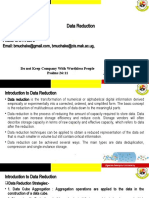0% found this document useful (0 votes)
22 views19 pagesData Structures - Student Version
Data structures organize data in memory to achieve design goals like fast access, easy resizing, and memory efficiency. Common data structures include arrays, linked lists, and hash tables. The document outlines Python's built-in data structures like lists, tuples, dicts, sets and frozensets and how to use them, including slicing lists and tuples and using set operators.
Uploaded by
extreme fattypunchCopyright
© © All Rights Reserved
We take content rights seriously. If you suspect this is your content, claim it here.
Available Formats
Download as PPTX, PDF, TXT or read online on Scribd
0% found this document useful (0 votes)
22 views19 pagesData Structures - Student Version
Data structures organize data in memory to achieve design goals like fast access, easy resizing, and memory efficiency. Common data structures include arrays, linked lists, and hash tables. The document outlines Python's built-in data structures like lists, tuples, dicts, sets and frozensets and how to use them, including slicing lists and tuples and using set operators.
Uploaded by
extreme fattypunchCopyright
© © All Rights Reserved
We take content rights seriously. If you suspect this is your content, claim it here.
Available Formats
Download as PPTX, PDF, TXT or read online on Scribd
/ 19




























































































